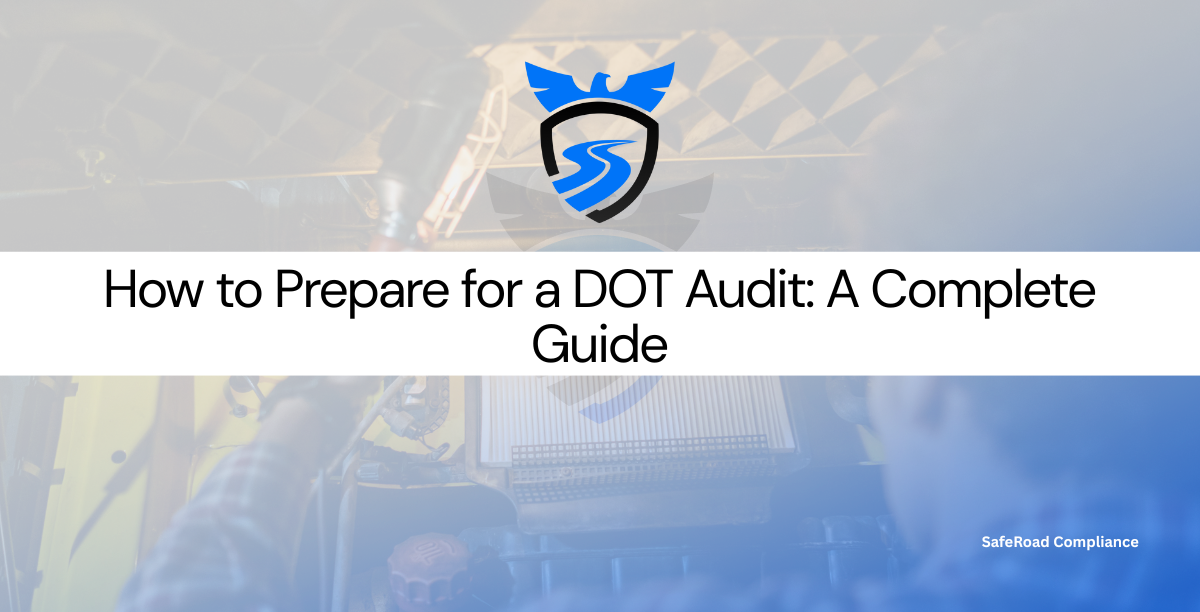The U.S. Department of Transportation (DOT) and Federal Motor Carrier Safety Administration (FMCSA) conduct audits to ensure carriers are compliant with federal safety regulations. A DOT audit can feel overwhelming, especially if your records are disorganized or incomplete. Proper preparation is the key to passing successfully while minimizing risks of fines, penalties, or even out-of-service orders.
This guide provides a detailed DOT audit preparation checklist, explains the audit process, and highlights essential compliance practices to stay ready at all times.
Understanding a DOT Audit
A DOT audit (or compliance review) is an official examination of a carrier’s records and safety practices. The FMCSA may initiate an audit for several reasons:
- Random selection for compliance review.
- A new entrant safety audit within the first 12 months of operation.
- Triggered by high CSA scores, accidents, or violations.
- Complaint-based investigations.
Audits assess a company’s safety, driver qualifications, recordkeeping, and vehicle maintenance to determine whether the carrier is operating within compliance.
DOT Audit Preparation Checklist
To prepare effectively, carriers must organize and review critical documents across several compliance areas. Below is a DOT audit checklist to help you get ready:
1. Driver Qualification Files (DQF)
- Driver employment applications.
- Motor Vehicle Records (MVRs).
- CDL copies, medical certificates, and physical exams.
- Pre-employment drug & alcohol test results.
- Road test certifications or equivalent documentation.
2. Hours of Service (HOS) Compliance
- Electronic Logging Device (ELD) records.
- Supporting documents (fuel receipts, toll records).
- Driver logs for the past 6 months.
- Policies for monitoring HOS violations.
3. Vehicle Inspection & Maintenance Records
- Daily Driver Vehicle Inspection Reports (DVIRs) (see Vehicle Inspection & DVIR Requirements).
- Preventive maintenance logs.
- Repair and service documentation.
- Annual inspection certificates.
4. Drug & Alcohol Testing Program
- Pre-employment, random, post-accident, and return-to-duty testing records.
- FMCSA Clearinghouse query results.
- Substance Abuse Professional (SAP) referrals if applicable.
5. Accident Register
- Accident records from the last 3 years.
- Insurance claim files.
- Preventive measures implemented after incidents.
6. Recordkeeping & Document Storage
- Retention of all required documents according to FMCSA timelines.
- Organized files by driver, vehicle, and compliance category.
- Accessible records for quick review during audits.
Common DOT Audit Mistakes to Avoid
- Missing or incomplete driver qualification files.
- Inconsistent or falsified hours of service logs.
- Lack of drug & alcohol testing program compliance.
- Poorly maintained vehicle inspection records.
- Disorganized or missing retention schedules for required documents.
Best Practices for Staying Audit-Ready
- Conduct internal mock audits quarterly.
- Use fleet management software to automate DVIRs, HOS, and maintenance logs.
- Train drivers and staff on FMCSA regulations.
- Keep records organized and backed up digitally.
- Stay updated with regulatory changes through FMCSA announcements.
Conclusion
DOT audits can be stressful, but with proper preparation and a structured compliance program, your fleet can remain audit-ready year-round. Maintaining accurate records, inspections, testing programs, and driver files not only helps pass an audit but also improves overall safety and operational efficiency.
For deeper insights on compliance, check out:
- Recordkeeping Requirements for DOT Compliance
- Drug & Alcohol Testing and Clearinghouse Compliance
- Vehicle Inspection & DVIR Requirements
FAQs on DOT Audit Preparation
DOT audits may be triggered by new entrant status, high CSA scores, reported complaints, or random FMCSA selection.
Typically, auditors review records from the past 6 months to 3 years, depending on the category (e.g., accident register: 3 years).
DOT audits usually take between 2 to 5 days, depending on fleet size and record organization.
Carriers may face fines, penalties, a conditional rating, or even out-of-service orders until compliance is restored.
By organizing driver files, keeping maintenance logs, conducting mock audits, and ensuring an active drug testing program, carriers can remain compliant.
Yes, compliance software automates recordkeeping, reduces errors, and makes document retrieval faster during audits.

